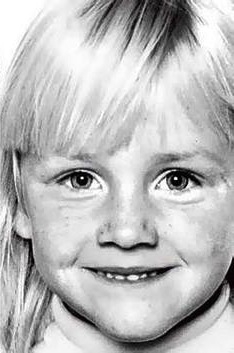
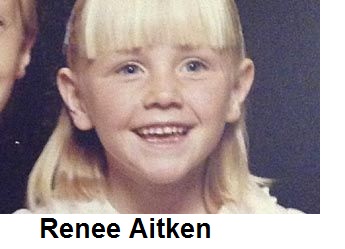
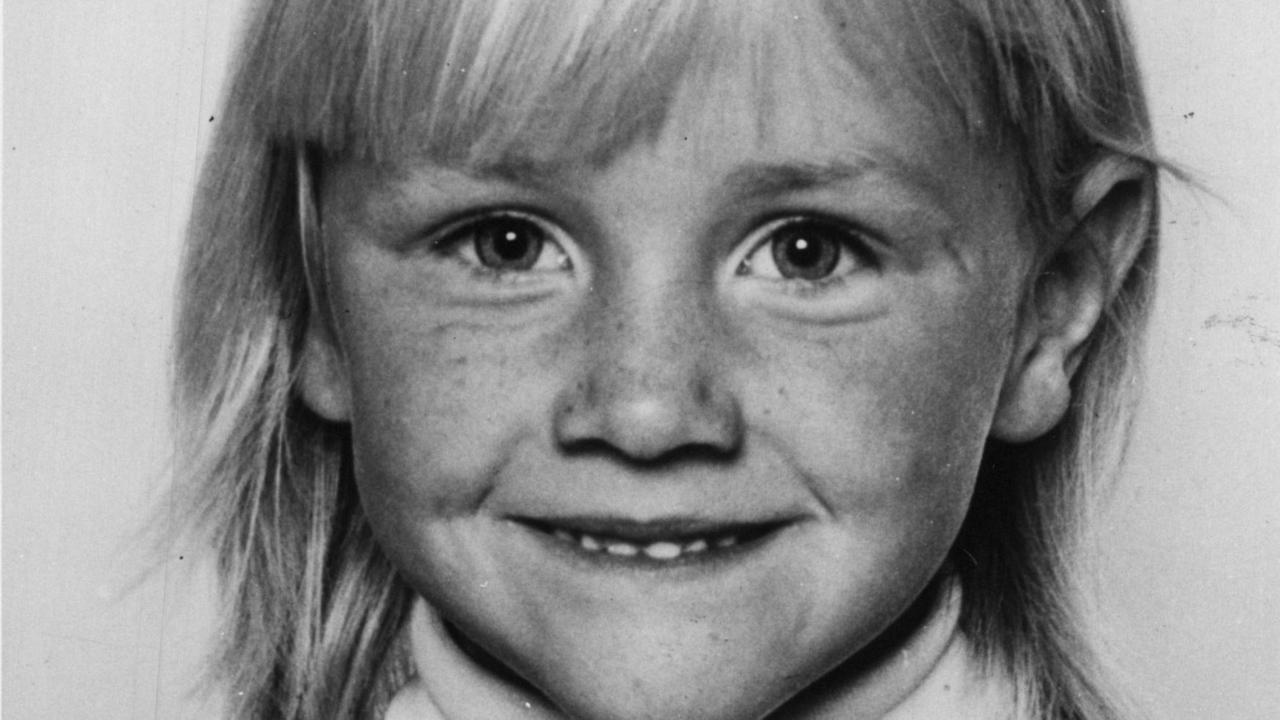


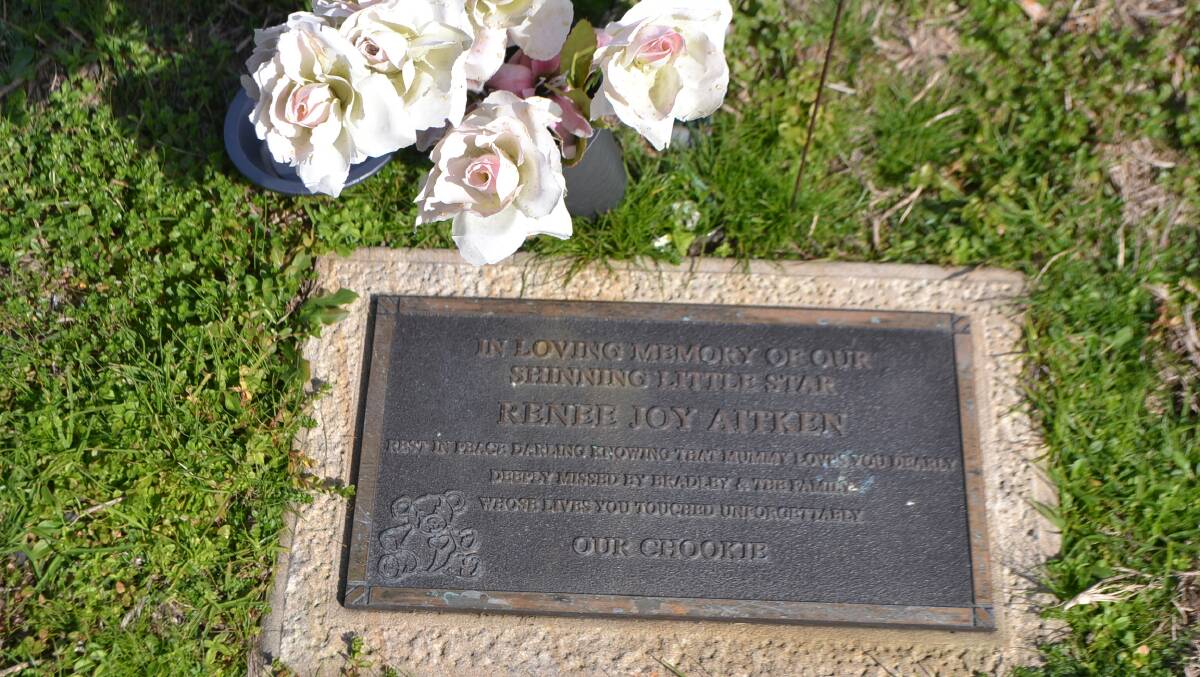
The memorial to Renee Aitkin in the form of a plaque on the Narooma headland.
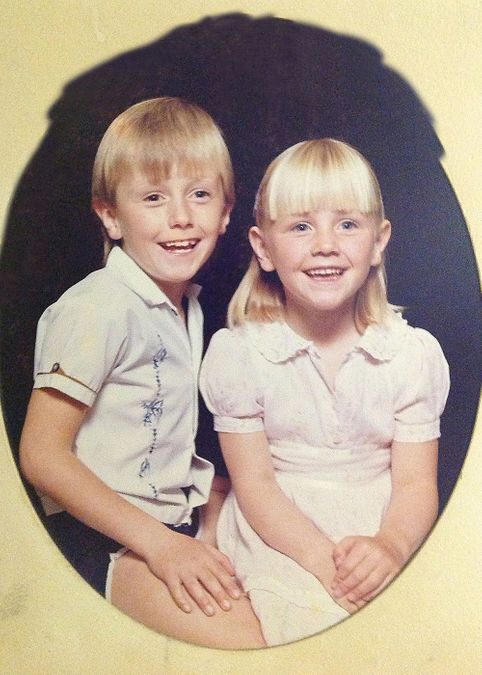
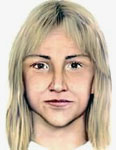
Renee and brother Brad Age-progression to 22 years old (circa 2000)
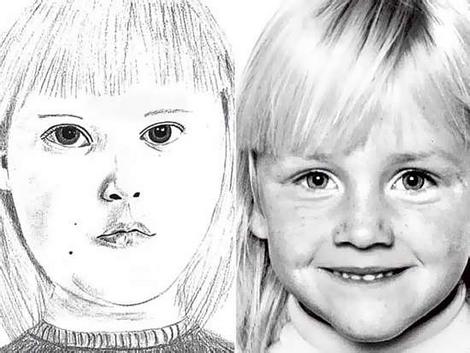
Above left - drawing found among the belongings of convicted child killer Michael Guider
| Name: | AITKEN Renee | Sex: | Female |
| Date of Birth: | 1978 |
| Age when missing: | 5 | Height (cm): | 91.0 | Build: | Thin |
| Hair Colour: | Blonde | Eye Colour: | Blue | Complexion: | Fair |
| Racial Appearance: | Caucasian |
| 5 year old Renee Aitken was last seen at Narooma NSW on 16 February 1984. She was last seen in her bed at 11.15pm and was noticed missing by her mother at 4.45am. The back door to the house was open. Renee's 8 year old brother was sleeping in a bed in the same room and woke to find his blanket had been removed and folded and placed back on his bed. |
Court to hear new evidence in missing girl case
Tuesday, 12 August 2003
Dramatic new evidence into the disappearance of Narooma girl Renee Aitken is
expected to be heard in Albury Coroner's Court today.
The inquest into Renee's 1984 disappearance begins today, 19 years after the
five-year-old disappeared from the bedroom of her Narooma home in south-east
NSW.
Despite exhaustive police inquiries and three massive land searches at the time,
no trace of Renee was ever found.
However, Batemans Bay detectives have continued their investigations into
Renee's disappearance and are expected to put startling new evidence before the
inquiry.
Detective Ted Freeman is expected to be the first witness called to give
evidence today, with the inquest scheduled to run for a week.
NSW: Sex offender involved in Renee Aitken disappearance - court
AAP General News (Australia)
12-8- 2003
An inquest has been told interviews with a Victorian prisoner have convinced
them he
was involved in the disappearance of five-year-old RENEE AITKEN 19 years ago.
An intruder snatched RENEE from her bedroom at Narooma, on the far south coast
of New
South Wales, in 1984.
Detective Sergeant TED FREEMAN has told the inquest police interviewed BRIAN
JAMES
FITZPATRICK at a Melbourne prison in 1987 and had no doubt he was involved in
RENEE's
disappearance.
At the time of the interview, FITZPATRICK was serving time for indecent assault.
He refused to be re-interviewed by police when the case was reopened in
September 1998,
and died in a car accident just weeks before the current inquest was to begin.
Sergeant FREEMAN has told the inquest at Albury courthouse in southern NSW that
FITZPATRICK
told police he visited Narooma in February 1984 with RENEE's aunt BONNIE AITKEN.
He said FITZPATRICK also told police that on the night of RENEE's disappearance
he
drove three times past the flat where RENEE lived.
Wednesday, 13 August 2003
A coronial inquest into missing five-year-old Narooma girl Renee Aitken has
heard evidence that police believe a Victorian man was involved in the
girl's disappearance.
An intruder snatched Renee from the bedroom she shared with her
eight-year-old brother almost 19 years ago.
No trace of the child was ever found.
Yesterday, Batemans Bay Detective Sergeant Ted Freeman told a coronial
inquest that interviews with Brian James Fitzpatrick at Melbourne's
Pentridge Prison in 1987 left police in no doubt he was involved in the
child's disappearance.
At the time of the interview, Fitzpatrick was in jail for indecent assault.
He refused to be re-interviewed by police when the case was reopened in
September 1998, and died in a car accident just weeks before the current
inquest was set to begin.
The inquiry into Renee's disappearance continues today in Albury Coroner's
Court.
The RENEE AITKEN inquest
New South Wales, Australia
Suicide claim denied --
Wed Aug 13 2003 (Shepparton News)
The wife of a Cobram man accused of involvement in the
disappearance of a five-year-old girl in 1984 has denied he killed himself
by running into a pole at Invergordon last month.
NSW: Court hears of kidnap plot rumours in Aitken case
ALBURY, NSW, Aug 13 AAP -
A plan to kidnap five-year-old Renee Aitken from her home
in February 1984 was unlikely to have been instigated by her mother, an inquest
heard
today.
Renee was snatched from the bedroom she shared with her brother Brad at their
home
in Narooma on the NSW far south coast, 19 years ago.
Neil Mumme (Mumme), who was in a defacto relationship with Renee's mother Morna
Aitken
at the time, today gave evidence at a coronial inquest into the little girl's
disappearance.
He said he told police, during an interview in June this year, that Ms Aitken
was not
involved in her daughter's kidnapping.
The police interview had covered rumours circulating at the time, including one
that
either Ms Aitken, Mr Mumme or both of them, had been involved in a plan to
kidnap Renee.
"I said, the Morna I know was definitely not involved in any plot to kidnap
Renee,"
he told the inquest, at Albury courthouse.
Mr Mumme said he had never seen any rough treatment of the children by their
mother.
"Those kids were well dressed, sent to school, loved and well looked after," he
said.
The police officer assisting the coroner, Sergeant David Parcell, asked Mr Mumme
whether
he had been involved in Renee's disappearance to which he replied in the
negative.
Mr Mumme said he could not recall a visit by Ms Aitken's sister Bonnie, her
partner
who was aged 16 at the time, and Brian "Spider" Fitzpatrick, to the flat he
shared with
Ms Aitken and her children on the night of Renee's disappearance.
However, he said he did recall Fitzpatrick - the chief police suspect in Renee's
disappearance
- arriving at the flat between 5am and 6am the next day, and that he had told
Fitzpatrick
that Renee was missing.
"The one thing about him I'll never forget is that he was always sweating. The
morning
was cool but he was still sweating," Mr Mumme said.
"Whether that was his make-up I don't know but it was the one thing I remember
about him."
Fitzpatrick died in a car accident in Victoria on July 9 this year - just weeks
before
the inquest was due to start.
The inquest yesterday heard that a police interview with Fitzpatrick at
Melbourne's
Pentridge Jail in August 1987, had left police in no doubt that he was involved
in Renee's
disappearance.
At the time of the interview, Fitzpatrick was serving a jail term for indecent
assault,
including an attack on Renee's then 12-year-old cousin.
The inquest is continuing.
NSW: Aunt of missing girl feels responsible
AAP General News (Australia)
13-8-2003
ALBURY, NSW, Aug 13 AAP - The aunt of missing five-year-old Renee Aitken today
wept
as she told an inquest she felt responsible for her niece's disappearance 19
years ago.
Renee was snatched by an intruder from the bedroom she shared with her
eight-year-old
brother Brad at their home in Narooma, on the NSW far south coast, in February
1984.
A coronial inquest into her disappearance, being held at Albury courthouse,
earlier
heard police suspect Brian James "Spider" Fitzpatrick of kidnapping Renee.
Fitzpatrick died in a car accident in Victoria last month - just weeks before
the inquest
was due to start.
Renee's aunt, Bonnie Aitken, today told the inquest she met Fitzpatrick through
her
then employer, Don Schelfhout (Schelfhout) and his 16-year-old son, with whom
she was
having a relationship.
At the time of Renee's disappearance, Ms Aitken was on a fishing holiday in
Narooma
with Mr Schelfhout, his son, and Fitzpatrick.
She broke down today as she gave evidence to the inquest, saying she felt
responsible
for meeting Fitzpatrick and taking him to Narooma.
"I do, from the bottom of my heart," she said.
"And I'm very sorry. With all my heart, I'm so sorry.
"I was a drug user and did the wrong thing but I had a good heart. He
(Fitzpatrick)
was a cold, callous person and a show pony."
On the night of Renee's disappearance, Fitzpatrick had gone to the flat where
Renee
lived with her brother, mother Morna and her de facto husband Neil Mumme to get
some blankets,
Ms Aitken said.
She said she did not believe Fitzpatrick's version of events in which he told
police
he had driven around Narooma for several hours after visiting the flat before
stopping
at a beach to listen to music and go for a swim.
"I know he didn't go swimming. It was common knowledge. He was too scared of
sharks
and wouldn't go in past his ankles," Ms Aitken said.
"I never once saw him swimming. We were all swimming, we loved the water."
She said a family friend, who had pursued Fitzpatrick because he thought he was
guilty
of Renee's kidnap, had been told by Fitzpatrick, "they'll never prove it".
Ms Aitken said Fitzpatrick had a smile on his face, and she took that as an
admission
of his guilt.
Fitzpatrick was convicted in 1984 of sexually assaulting a 12-year-old cousin of
Renee's
three weeks after Renee's disappearance.
Earlier today, Mr Mumme told the inquest neither he nor Morna Aitken were
involved
in Renee's kidnapping.
He said he told police, during an interview in June this year, that "... the
Morna
I know was definitely not involved in any plot to kidnap Renee".
Mr Mumme had been responding to questions during the interview of earlier
rumours that
the couple had been involved in Renee's disappearance.
He said he had never seen any rough treatment of the children by their mother.
"Those kids were well dressed, sent to school, loved and well looked after," he
said.
Mr Mumme said he recalled Fitzpatrick arriving at the flat between 5am and 6am
the
morning after Renee disappeared, and that he had told Fitzpatrick that Renee was
missing.
"The one thing about him I'll never forget is that he was always sweating. The
morning
was cool but he was still sweating," Mr Mumme said.
The inquest continues tomorrow.
NSW: Missing Renee was probably murdered, says NSW coroner
AAP
General News (Australia) 15-8-2003
A five-year-old girl who disappeared 19 years ago was probably
murdered within a day of going missing, a coronial inquest has
reportedly found.
Renee Aitken was abducted from her home at Narooma, on the NSW far
south coast, on
February 16, 1984.
Police investigating her disappearance believed her abductor was a
convicted Victorian
sex offender, Brian James "Spider" Fitzpatrick, who died in a car
accident last month.
However, NSW deputy state coroner Carl Milovanovich yesterday
delivered an open finding,
according to a report in the Illawarra Mercury.
According to the newspaper, Mr Milovanovich said Renee was probably
murdered on or
after the day of her disappearance.
He said Fitzpatrick was the main person of interest in the case, but
that the evidence
would not be strong enough to put before a jury.
During three days of evidence in Albury, the inquest heard
Fitzpatrick had visited
Narooma in February 1984 with Renee's aunt, Bonnie Aitken.
The inquest also heard that a police interview with Fitzpatrick at
Melbourne's Pentridge
Jail in August 1987 had left police in no doubt that he was involved
in Renee's disappearance.
At the time of the interview, Fitzpatrick was serving a jail term
for indecent assault,
including an attack on Renee's then 12-year-old cousin.
Fitzpatrick died last month, just weeks before the inquest was due
to start.
Police in Victoria believed he intentionally crashed his car into a
concrete power
pole at Strathmerton, in the state's north.
Bay detectives honoured for work on murder mystery
By Les Murphy Wednesday, 26 April 2006 - Narooma News
Two Batemans Bay detectives have been honoured for their role in
investigating the murder of a five-year-old Narooma girl, Renee Aitken, who
disappeared more than 20 years ago.
When her distraught family reported Renee missing in 1984, police began what
would be a 20-year search to locate either the girl or her remains.
The mystery took a dramatic turn in 2003 when the prime suspect committed
suicide after being subpoenaed to appear before an inquest into her death.
Detective Sergeant Edward Freeman and Detective Senior Constable Todd
Clayton were presented with Southern Region Citations by Southern Region
Commander, Assistant Commissioner Robert May, at the Narooma Golf Club last
Thursday.
Detective Sergeant Freeman had reopened the case when he was posted to the
local command in 1998, to see if time and a fresh pair of eyes could affect
the outcome, the awards ceremony was told.
"From September 1998 to late 2003, Detective Sergeant Freeman and his team
would periodically revisit the case looking at gaps in the initial inquiries
that had only become apparent from a perspective of distance and time.
"They would re-investigate matters that had developed after the original
investigation had finished, even to investigating suspicious earth
disturbances that had been reported in the years that followed," said Senior
Constable Gary Traynor of the Far South Coast Local Area Command, who acted
as master of ceremonies for the awards presentations.
They had also interviewed young women who claimed to be Renee, or believed
they were Renee.
"In 2003, Detective Sergeant Freeman was confident that he had located a
suspect for the disappearance of Renee and he asked the coroner to subpoena
the suspect to appear before an inquest.
"A month before the inquest, the suspect committed suicide," Senior
Constable Traynor said.
"The eventual finding of the coroner was that in all probability, Renee
Aitken had been abducted and murdered within a short time frame in 1984.
"The closure of the Renee Aitken file is entirely due to the actions of
Detective Sergeant Freeman and his team of officers."
Did Samantha's killer draw portrait of Renee?
John Kidman
Source: The Sun-Herald
December 17, 2006

THE killer of Bondi schoolgirl Samantha Knight made a sketch of a girl who
resembles Renee Aitken, the five-year-old who vanished from her South Coast
home two decades ago.
The drawing by Michael Guider captured the attention of the detective at the
heart of the Aitken case, and senior NSW police know of its existence.
But despite fears that it links the pedophile with Renee's abduction and
probable death, he has never been questioned about it.
The publication of the sketch comes as the NSW Ombudsman considers
intervening on behalf of Denise Hofman, a Sydney teacher who spent years
convincing senior police of Guider's involvement in the Knight case but has
failed to persuade them he may be linked to the Aitken mystery too.
Mrs Hofman - a 58-year-old mother of five - received poems, letters and
etchings from the pedophile in the mid-1990s when he was serving time in
Lithgow jail for child sex offences.
Scrapbooks once kept by Guider contain newspaper cuttings about Renee's
abduction and probable murder, The Sun-Herald reported last month. Guider's
police mug shot was privately identified by a key witness in the case, while
other evidence pointed to him having worked in Canberra, just two hours from
Renee's Narooma home.
Police say they are unable to take their inquiries any further without more
specific evidence, nor will they allow Mrs Hofman access to the scrapbooks
or discuss their contents with her.
In 2002 Guider was sentenced to 12 years' jail for the manslaughter of
Samantha in 1986 after Mrs Hofman exposed her former friend as a suspect,
then went undercover to help police gather evidence against him.
The pair met in 1993 through a mutual interest in Aboriginal art and
history.
But later, when she heard of Guider's incarceration for molesting children,
Mrs Hofman made a connection between Guider's obsession with Samantha's
disappearance and began visiting him in prison.
While advised by senior police to walk away from her campaign because Guider
was not a suspect, she pressed on and was vindicated.
After Guider was convicted, Mrs Hofman contacted Batemans Bay detective Ted
Freeman and told him about the sketch, which she believed was of Renee. He
travelled to Sydney to collect it and began reviewing the case, but has
since retired.
The Ombudsman last week asked Mrs Hofman for a written account of her
concerns about the Aitken case, including the responses she had recently
received from police headquarters.
The law enforcement watchdog will then determine whether it should request
that police conduct a formal internal review.
NSW Police declined to comment. But yesterday Mrs Hofman said she had
received a promise on behalf of Deputy Commissioner Andrew Scipione to
reconsider her concerns.
"They called me on Friday and said they may not have been fully aware of
certain historical aspects of the Aitken case," she said. "As a result,
they've asked that I write to them again and, while offering no promises,
they say they're prepared to have another look at what I've raised."
There are just murders for which there has not been enough evidence to prove who did it.
"Most detectives believe they know who the killer is, and there is an old adage, 'you end up speaking to the killer even though you may not know it within about 48 hours of the murder'," retired homicide detective Michael McGann said.
Mr McGann said every homicide cop had at least one case which sticks in their craw - one they could never prove, but knew who did it.
"Mine was a little five-year-old girl called Renee Aitkin," he said.
"Over a few beers my partner and I discussed the idea of grabbing him, tying him to tree, putting a gun down his throat and asking him what he did with Renee's body."
But sanity and reason prevailed instead of justice and Renee's murder is still considered unsolved.
Renee was five when she was abducted from her Narooma home on the South Coast in February, 1984. Her body has never been found and she is still listed by NSW police as a missing person.
"My partner and I knew who did it. We needed to find her body," Mr McGann said.
Fast forward to 2009 and the horrific mass murder of the five Lin family members is another example of detectives having a good idea of the killer but biding their time until the evidence is there to pounce.
A source within Strike Force Norburn, set up to investigate the brutal murder of Min and Lily Lin, their sons Henry and Terry and Mrs Lin's sister Irene, said detectives had always been confident they knew who was responsible for the killing on July 18 last year, but they had to be strategic.
"You only get one go, it's not something you rush for the sake of it," the police source said.
Similarly, officers working to solve the execution-style killing of North Shore businessman Michael McGurk have always been confident they knew who was behind his murder.
What makes it more difficult for homicide officers is when no body is ever found.
But every time human bones are found, there is a group of detectives - retired or still serving - who take a very keen interest in their discovery.
They are the cops who have an unsolved case on their books, and they hope the bones belong to "their" case'.
"When I hear about bones being found, my ears prick up," Detective-Sergeant Damien Loone said.
Thirteen years ago, Sgt Loone was handed the cold case file of missing Sydney mother Lynette Dawson, 34, who vanished from her Northern Beaches home on January 9, 1982. "At that stage it was a missing person's case, and was 15 years old then.
"Even after 28 years, you hope the bones turn up and provide the last pieces in the jigsaw," Sgt Loone said.
When trail bike riders stumbled across a human skeleton in the Belanglo State Forest last Sunday, cold case detectives across NSW braced for the possibility it could be the last piece of the puzzle and solve their case.
"You never know. Lynette's sibling's DNA is on a data base and if they believe these bones are of a female aged 30 to 40 it's a possibility," Sgt Loone said.
Frustration of not being able to get the killer leads to fantasies of breaking the case and creative "ways" of getting the evidence.
Another "bones" case still being investigated by police is the remains of a male and female unearthed by workmen clearing land for the desalination plant at Kurnell about three years ago.
A shin bone was found by the workers in October, 2007, and days later, about 300m away, ribs and other smaller bones were found in sandy scrubland off Sir Joseph Banks Drive.
Then, a pelvis and foot bones, eerily still wearing a sock, were found.
Forensic tests carried out revealed the bones belonged to two people who died less than 50 years ago.
Just as the bones in Belanglo raised the spectre of a new- found victim of Ivan Milat, the discovery at Kurnell had many speculating they could be the victims of convicted killer Arthur "Neddy" Smith.
Smith was known to favour the dunes south of Sydney as a dumping ground for murders he committed in the '70s and '80s of unwanted underworld associates. Rubbish found with some of the bones indicates they were probably from some time after the 1970s but tests offer no clue to whether the pair were murdered, died accidentally, or even died together.
Brad Aitken, 38, Melbourne, Vic
Published in issue 14, 2014
A cold shiver ran down my spine as I woke. I was eight, and the bedroom I shared with my sister, Renee, then five, felt dark and eerie after a wild storm a few hours earlier.
Then I realised there was another reason I was so cold. The blanket that had been covering me when I went to sleep was folded down neatly below my knees. That's weird, I remember thinking. How did it get like that?
Listening to the rain pelt down, I tiptoed out of bed. Normally, if either Renee or I woke in the night, we'd cuddle together so we felt safe. But this time, as I reached Renee's bed and leant across to nudge her awake, all I could feel was empty sheets. Where was she?
The bed seemed to go on forever as I felt around in the dark. Creeping out to the bathroom across the hall, I flicked on the light. That's when I realised Renee was gone. At first I didn't want to wake my mum, Morna, so I looked everywhere myself - I even checked the fridge.
But then, in the kitchen, I turned around to find the back door wide open and I started to panic. 'Renee's gone,' I cried, waking Mum and her partner, Neil.
'She's in her bed,' Mum said wearily. 'Go to sleep, darling.' But when I insisted, she got up to check and realised Renee had vanished without a trace. The next few hours passed in a haze of panic and confusion.
While Mum called police, Neil drove around the streets, searching for any sign. As each terrifying hour turned into the next, there was still no sign. Mum was frantic as more than 200 police, SES volunteers and neighbours began the biggest search of its kind in our hometown of Narooma, NSW.
The police thought someone had snatched my sister but the trail soon turned cold. My mind spun with questions. Was she out there scared, hurt or worse? Would I ever see her again?
Even though she was younger than me, Renee was always her own person. One of her favourite activities was to fill a cup with ice and loudly crunch away at the blocks. Fearless and confident, I can still remember her first day of kindergarten.
While most kids were crying, too scared to leave their parents, Renee was excited. She put her arm around a little boy who was upset. 'Don't worry, I'll take care of you,' she'd told him with a smile.
Everyone who met her fell in love with her. How could anybody steal her away? I remembered the way my blanket had been folded back that night. It made me wonder. Had whoever taken my sister believed I was her at first? We were centimetres away. I shuddered at the thought.
Gradually days turned into agonising months, then years. Instead of joy, each birthday and Christmas brought sadness. But somehow, life had to go on.
Eventually we moved out of the apartment where Renee had gone missing. It broke my heart to leave the memories but I made a promise. If ever I have children of my own, I'll call my daughter Renee, I vowed.
The mystery affected us all so very deeply. After Mum and Neil parted ways, she went on to meet her husband Luke, and have another baby, Orisi, now 18. But while his birth brought happiness, Mum was terrified too. She couldn't bear the thought of losing a second child.
And even when I met my wife Grace, the events of that terrible night remained etched in my mind. Would we ever learn the truth? It wasn't until 2003 - 19 long years after my beautiful sister's disappearance - that we finally had a glimmer of hope.
A coronial inquest was due to be heard at Albury Coroner's Court. I felt my hopes climb when police told us they had an important lead. They'd previously interviewed a convicted sex offender called Brian James 'Spider' Fitzpatrick about Renee's disappearance.
He was now their main suspect and they'd called on him to attend the inquest. I clung onto the hope that the mystery would finally be solved. But just weeks before the hearing was due to start, something shocking happened.
Fitzpatrick died in a car crash and our family was left shattered by the news. 'I feel like our last chance at justice has been snatched away,' Mum sobbed. And the coroner's findings convinced us further. He concluded that Renee was likely killed on, or shortly after, she was abducted on the night of February 16 1984.
For the next five years, the pain I felt remained so raw. If only we could have done more to see that justice was done...
But then, Grace had some incredible news which made me realise how lucky I was.
'I'm pregnant,' she told me. Soon after we discovered we were expecting a girl. A flood of emotions overwhelmed me as I let it sink in. I could finally fulfil the promise I made to my sister decades earlier.
When our baby was born, I felt a huge rush of love. With dark hair and perfect little cheeks, she was gorgeous. Little Renee is now almost six years old, the age my sister was when she disappeared. And sometimes the similarities are uncanny.
One morning, I came into the lounge room to find our girl munching on a cup of ice. 'How did she learn that?' I marvelled to Grace. She'd picked up her aunty's most quirky habit without even meeting her. It was incredible.
But while Renee knows her name has a special meaning, it's important she never lives in the shadow of my sister. She is her own person and was given her name to honour Renee - not replace her.
This year marks the 30th anniversary of my sister's disappearance and I will never stop wondering what happened that awful night.
But I am determined to look to the future. Even though the questions still remain, Renee's spirit will live on. No-one can take that away from us.
The suspects
*At Renee's inquest, detectives said that an interview in 1987 with Brian
James Fitzpatrick, known as 'Spider', left them in no doubt that he was
involved in her abduction. At the time of the interview Fitzpatrick was in
jail for indecent assault.
*When the case into Renee's disappearance was reopened in September 1998,
however, he refused to be re-interviewed and just weeks before he was due to
appear at her inquest, he died in a car accident. The police said his death
was suicide but his partner denied this.
*In an unexpected twist, in December last year, NSW detectives received
information about a new suspect in the case. Michael Guider was convicted of
killing nine-year-old Bondi schoolgirl Samantha Knight, who disappeared in
1986, two years after Renee vanished. A former cellmate of Guider claims the
killer repeatedly drew pictures of a girl he named 'Renee' and that the
sketches bore a resemblance to the missing child. The police said they were
taking the new information 'seriously'.
If you have information on Renee's disappearance, call Crime Stoppers on
1800 333 000.
With National Missing Persons Week happening and a major search scheduled for missing man Ray Speechley at Dalmeny this weekend, lets not forget the tragic case of Renee Aitkin.
Her disappearance 32 years ago has never been solved and shook Narooma to the core when it happened. Today there is a memorial to her in the form of a plaque on the Narooma headland.
Five-year-old Renee went missing from her home in Narooma on February
17, 1984. She was last seen in her bed at 11.15pm the previous evening
and was noticed missing by her mum at 4.45am.
The memories of the search for Renee remain strong for Bruce Allen, a founding member of the Narooma VRA rescue squad and the current captain of the Tilba RFS brigade.
It has been said that the search for Ray Speechley this weekend could be the biggest search the town has experienced, but Mr Allen said the search in 1984 was massive and went for 14 days straight and involved police, SES, VRA, RFS and members of the public.
The search for Renee extended from Mystery Bay to Bodalla, and after the initial search, there were more weekend searches over the next couple of years, or when police had a new lead, he said.
It changed the whole the whole demeanor of Narooma going from a quiet
coastal village to a place full of suspicion at that time, Mr Allen
said.
He was hopeful the outcome of this weekends search would be more successful and provide some closure to the family of Ray Speechley, 77, who went missing on July 7 after running away from the IRT Dalmeny aged-care facility where he was on respite after his Alzheimers disease worsened.
Little Renee meanwhile remains missing. A coronial inquest in 2003 was
told police were convinced Brian James "Spider" Fitzpatrick kidnapped
Renee, but the convicted sex offender died in a car accident just prior
to that inquest.
Renees case made news again when NSW detectives said they would interview a former cellmate of the killer of nine-year-old Bondi schoolgirl Samantha Knight, after claims he repeatedly drew pictures of a girl he named ''Renee''.
The new information was from the former cellmate, who now lives in the Netherlands. He played chess with Michael Guider, who was convicted of killing Samantha Knight, who disappeared in 1986, two years after Renee vanished. Guider has never revealed what he did with Knight's body.
A DNA collection drive could solve hundreds of unsolved missing person cases, including that of five-year-old Renee Aitken, who hasn’t been seen since for 37 years.
The last and only time the mother of missing child Renee Aitken provided a DNA sample was after a mind-boggling phone call from the United States.
It was the early 2000s and there had been no trace of Renee for almost 20 years.
She was five years old when she was snatched from her bed in the middle of the night in the sleepy town of Narooma in February 1984.
The case was every parent’s worst nightmare and became one of the most baffling unsolved crimes in NSW.
In the Christmas holidays of 2001 or 2002, police received the call from an American woman, claiming that she might be Renee.
The woman had been adopted and was on a mission to find her birth family.
She was searching missing children in Australia when she came across a photo of a blonde-haired Renee.
The woman travelled to Australia to take part in a DNA comparison with Renee’s mother.
Renee’s extended family have gone to great lengths to support her heartbroken mother, Morna, over the decades, including shielding her from any dashed hopes.
“We wanted to shield her in case it didn’t come to anything,” Renee’s aunt Robyn Aitken said. “That’s exactly what happened.”
Morna provided a DNA sample and it was discreetly compared against the woman from America. There was no match.
“It was really horrendous because it’s that moment of ‘what if?’,” Ms Aitken said.
“What if this is the one?”
Next month Morna will provide a second DNA sample — this time as part of a groundbreaking initiative aimed at solving the state’s long term missing person cases.
The newly minted NSW Police Missing Persons Registry will host a pop-up centre in three regional towns next month to take DNA samples from the families of missing people.
Those samples will be compared against the state’s 440 unidentified remains cases in the hope of providing families with answers.
The DNA collection program was piloted on the mid-North Coast earlier this year and about 50 relatives volunteered samples.
There have been no cases solved yet, MPR boss Detective Inspector Glen Browne said, but the process was also about ruling matches out.
“We had one example where our scientists thought there was a weak match between unidentified remains and a long-term missing person,” he said.
“But getting new familial DNA from the family of that missing person showed them it was in fact not a match.
“It’s not a positive result we are looking for but it is something that got that investigation back on the right track.”
Insp Browne said families were also interviewed to capture unique details, like tattoos or surgical scars, that would be uploaded with the DNA samples to the National Missing Persons Victim System database.
Behind the Northern Region, the Southern Region has the largest number of long-term missing person cases in the state.
Some of those cases are also suspected homicides — like Renee.
In 1984, Morna and her children Renee and Brad had moved up to Narooma from Victoria.
On the night of February 16, the family shared fish and chips on the beach before returning home for bathtime.
“The kids were tucked up in bed,” Ms Aitken said.
“Then Brad woke up and said “mummy, mummy, Renee isn’t in bed’.”
Brad, then 8, had been sleeping in a bed in the same room as his sister.
He woke up and found his blanket folded down his legs and Renee missing from her bed.
The back door was wide open.
The key suspect, Brian “Spider” Fitzpatrick, also known as Brian Bishop, died in a car accident after being subpoenaed to give evidence at an inquest into Renee’s disappearance in 2003.
The Aitken family suspected it was suicide.
The convicted sex offender had been in Narooma at the same time Renee went missing.
Ms Aitken said he had actually stayed at Morna’s flat days prior with Renee’s aunt while the family were away.
“He was the creepiest person,” she said.
“He actually came back to the flat after we had called the police (when Renee went missing) looking for his blanket, which he’d already came for earlier. He looked drug affected.
“He left Narooma four or five days later.”
Detectives interviewed Fitzpatrick in jail in 1987 and were left in “no doubt” he was involved in Renee’s disappearance, a 2003 coronial inquest heard.
The coroner found Renee was likely murdered after she was abducted, but delivered an open finding.
Morna no longer lives in Narooma but is continually haunted by what happened that night.
She tried to articulate the unrelenting pain of missing a loved one and missing answers.
“It is a total heartache,” she said. “The mental and physical anguish that you feel, I find it hard to talk about.”
Police have told the Aitken family that, ideally, it would be best to have DNA samples from six different family members.
This information will be used to create mini-family trees on Renee’s profile, along with other identifying details — dental records and surgical scars.
“I encourage anybody with a missing loved one to come forward and give their DNA to make sure police can identify quickly,” Ms Aitken said.
“I am so pleased there are better processes in place for DNA testing and registering.”
The DNA pop-up centres will be held at Bega, Batemans Bay and Nowra between May 3 and 7.